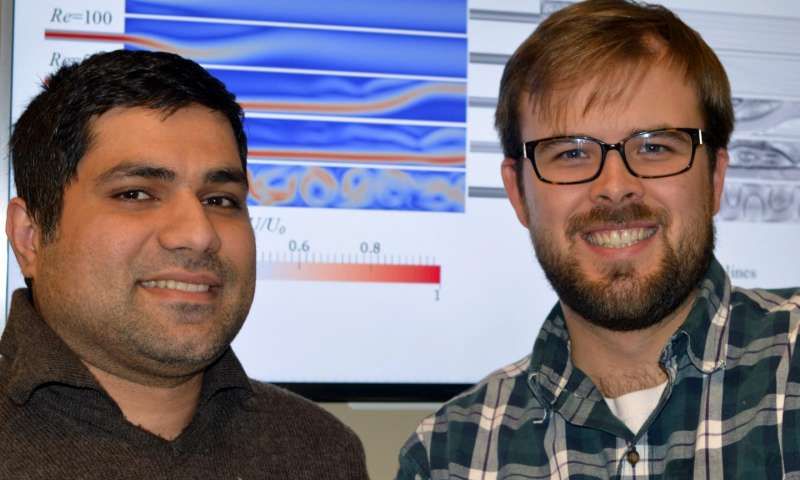Wastewater Research to Protect the Aquatic Life
Published on by Marina A, Previously Key Account and Content Manager at AquaSPE AG in Technology
New wastewater system design guidelines developed at UBC can help municipal governments better protect aquatic life and save millions of dollars a year.
 In a recent study, engineers at UBC's Okanagan campus developed guidelines that can tailor the design of specialized filters, called fluidized bed reactors, to local conditions and help prevent phosphorous deposits from forming in wastewater systems.
In a recent study, engineers at UBC's Okanagan campus developed guidelines that can tailor the design of specialized filters, called fluidized bed reactors, to local conditions and help prevent phosphorous deposits from forming in wastewater systems.
The guidelines also help ensure the fluidized bed reactors avoid the release of phosphorus into the environment. As phosphorus promotes oxygen-depleting algae blooms, its release can suffocate aquatic life.
"If left unchecked, phosphorus can cause significant environmental damage and millions of dollars in additional maintenance costs for large wastewater plant operators, such as municipalities," says the study's principal investigator Joshua Brinkerhoff, assistant professor of engineering. "These are consequences we obviously want to avoid and the design guidelines developed in this research can help us to do that."
Using computer simulations, Brinkerhoff and PhD candidate Nima Moallemi were able to test different types of water flow scenarios in a virtual environment and estimate the operating conditions of the fluidized bed reactors that achieve the best mixing of liquid and solid material to remove phosphorus.
The guidelines allow designers to account for differing wastewater rates and quality found in different geographic regions, as the chemical makeup and amount of wastewater varies with geography and city size.
Moallemi and Brinkerhoff's study was recently published in the journal Computers and Fluids .
Source: EurekAlert!
Media
Taxonomy
- Waste Water Technology
- Waste Water Treatments
- Filters
- Wastewater Treatment
- Industrial Water Treatment
- water treatment
- Water & Wastewater Treatment
- Fluid Filtration
- Waste Water Treatment
- Water & Wastewater
1 Comment
-
The solutions of these scientists are good but the pollution is so widespread in the world that problems can only lessen changing the great purifiers and completely eliminating large power plants. Because we could produce energy purifying the waters of lakes, marine coastal areas and those sewage, consuming phosphorus, fluoride, nitrates, pesticides, fecal coliforms, by producing compressed hydropower submerged, which not only produces energy costs, much lower than coal, but also dissolves oxygen in the deep waters, where they can not get to the other oxidation systems for technical and economic reasons. I look for international partners for this and other environmental and other energy solutions.
The invention of the pump with two separate supply until the impeller on the suction side has allowed the invention of hydropower by recycling water in an open vessel. With this system we have, at the same time, lifting water and the production of energy, mainly by exploiting the dynamic pressure (or kinetic energy) of the water flowing from the upper reservoir.
This invention, in turn, has inspired the present invention, which interacts positively with the environment. In fact, in pressurized systems with pumps with double separate power supply, the continuous internal recycle to the volume of water accumulated allows balance the hydrostatic pressure in inlet and outlet of the pump and therefore to circulate the water with very little energy.
With the second separate supply until the inside of the impeller, it is possible to introduce water at low pressure in the pressurized tank. Since water cannot be compressed, the same amount is excreted in high pressure by the cushion of air through a tube that feeds a turbine, transforming the energy of static pressure into dynamic and producing electricity. The compressed air volume does not vary, therefore the air behaves like a spring, but due to of the principle of Dalton on the partial pressures of the gases and Henry on the solubilization of the gases, neglecting the effect of nitrogen that is neutral and of the other gases that are in negligible percentages, we have an important effect of the oxygen solubilization due to the pressure which increases proportionally according of the same. This involves an increase in capacity of water purifying, without increasing the cost of production of electricity. Considering that to state of the art pressurized water power does not exist, it is clear that this invention involves huge economic and environmental benefits. If with the pump with double separate supply introduce polluted water into the pressurized tank, we can produce energy while we clean instead of consuming energy. We can realize submerged pressurized water power plants in the depths of lakes and seas. But the same application can be produced in a reduced version even in small treatment plants. All the hydraulic systems, including those depurative, of the future will be able to produce energy because the power of compressed air always allows to have residual energy to be exploited in a turbine and all will be with the water recycling, because the recycling of water by the pumps with the dual separate supply allows to circumvent the force of gravity and the pressure. The compressed air will be used as an accumulator of energy that disperses only the part of the energy due to the components that dissolve in the water chemically. This dispersion in global systems, which are also depurative, cannot be considered a loss of yield. With this invention we move towards the elimination of energy costs and multiplies environmental protection.
1 Comment reply
-
Please see the solutions on my profile or website http://www.spawhe.eu/the-pressurized-submerged-hydroelectric/
-